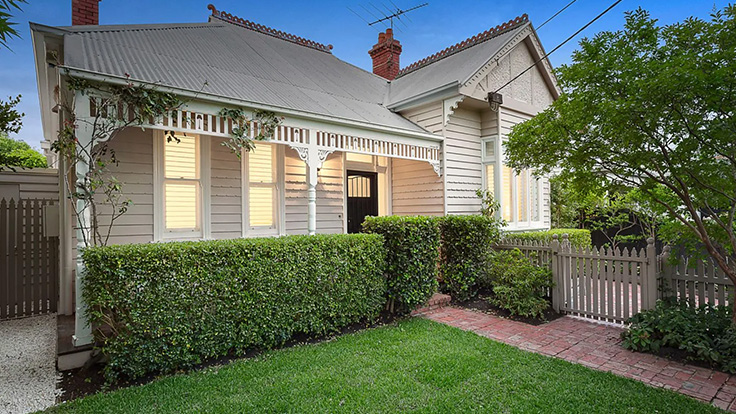
The year 2020 has been an uncertain time for the Australian property market. Despite predictions of large price falls early in the coronavirus recession, the property sector has come through the crisis in remarkably good shape.
Property prices increased across the country during the pandemic and while supply is still low in most capital cities, buyer demand on realestate.com.au is at an all-time high off the back of a plethora of incentives. With demand through the roof, it’s certainly a good time to think about selling for those considering a change.
As 2020 draws to a close, here are five trends we can expect from the property market in 2021.
1. Demand to purchase will remain at elevated levels
Despite being headlined by recession, rising unemployment and business closures, interest in residential properties for sale has skyrocketed in 2020.
Household saving has reached levels not seen since the mid-1970s, with many Australians unable to spend money the way they normally would. Borrowing costs have never been lower and governments are pumping money into the economy in the form of HomeBuilder, first-home buyer incentives and stamp duty relief in some states. All of these factors are encouraging Australians to consider buying property.
With most stimulus measures to continue into 2021 and interest rates to remain low for a number of years, buyer demand will likely stay at near record-high levels in 2021, driving strong demand for property purchases.
2. Some rental markets will remain challenged
Renter-centric, inner-city unit markets have faced tough times during the pandemic, but this is certainly not the case across the board.
Inner-city apartment rental markets are extremely reliant on people migrating to a new city, whether that be overseas arrivals for study or work or people arriving from interstate. In 2020, the drivers of such migration have been broken due to the pandemic and inner-city apartments have seen significantly reduced demand and subsequent price falls.
While demand for inner-city apartment rentals has dropped, demand for rentals in outer capital city housing markets and major regional areas has increased.
In 2021, inner-city apartment markets are likely to continue to face reduced demand while Australia’s international borders remain closed. Renters are likely to be looking for better or cheaper accommodation when their leases expire and there will be significant competition amongst landlords to secure tenants.
3. First-home buyer activity to fade and investors to return
Demand from first-home buyers in 2020 has been buoyed by fewer investors, historic low borrowing costs and government incentives.
As a result, the value of lending to first-home buyers reached an historic high in October 2020 and was 48.6% higher year-on-year. At the same time, the value of lending to investors has been lower than lending to first-home buyers over recent months, however this has started to lift recently.
The federal government’s HomeBuilder scheme has been extended until March 2021, which means first-home buyer activity is likely to remain elevated over the coming months. However, the scheme has pulled forward demand from this segment, which means that once it is over there will likely be much less demand from first-home buyers.
On the other hand, investor lending has been low but with historic low interest rates and low returns in most asset classes, residential property investment is likely to become increasingly attractive in 2021.
The types of properties investors purchase are likely to be far different to the typical stock they have targeted in the past, such as one-bedroom and two-bedroom, inner-city apartments. Investors are more likely to be looking in established and new housing areas as well as regional markets where demand is lifting.
4. Low overseas migration will have repercussions for new housing
Demographics have been a driver of demand for housing over recent years. While birth rates have been falling, Australia has continued to see a comparatively high rate of overseas migration.
If someone wants to purchase a property before they become a citizen, they will typically have to purchase a new home. Given this, a lot of demand for new houses and units is driven by non-citizen purchasers.
With the international borders shut throughout this year and seemingly well into 2021, this will create challenges for the new housing sector.
Government stimuli has sought to offset those challenges, however it has largely been targeted towards new land or house and land purchases rather than apartments. Stamp duty relief announced as part of Victoria’s state budget is providing a boost to the new apartment sector in that state.
Apartment developers have responded by reducing supply – it was already reducing prior to this year – and by increasingly delivering smaller-scale, owner-occupier style developments with significant local amenity.
The lack of migration to Australia will continue to weigh on the new housing sector, however state and federal governments will likely continue to provide support measures for these sectors while borders remain closed.
5. Property prices to continue to rise
Australia’s housing market has been surprisingly resilient through the recession in 2020. Property prices have been rising over recent months, fuelled by strong demand and low borrowing costs.
It seems unlikely that these conditions will change in 2021, unless there is an unexpected surge in the volume of stock listed for sale.
While stock for sale is likely to rise, it still seems likely that it will not surge to the extent that it removes the upwards pressure on prices.
Overall, 2021 is shaping up to be a strong year for the housing market but certain areas will fare better than others.




